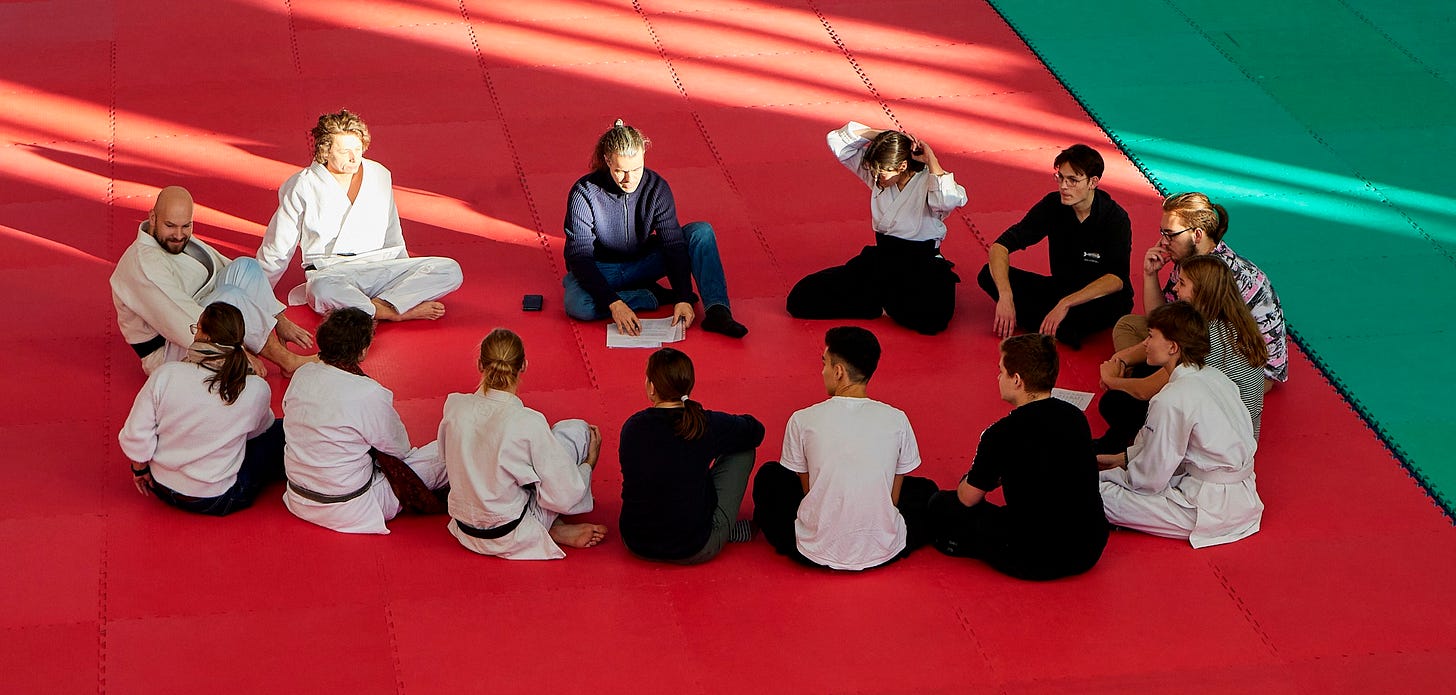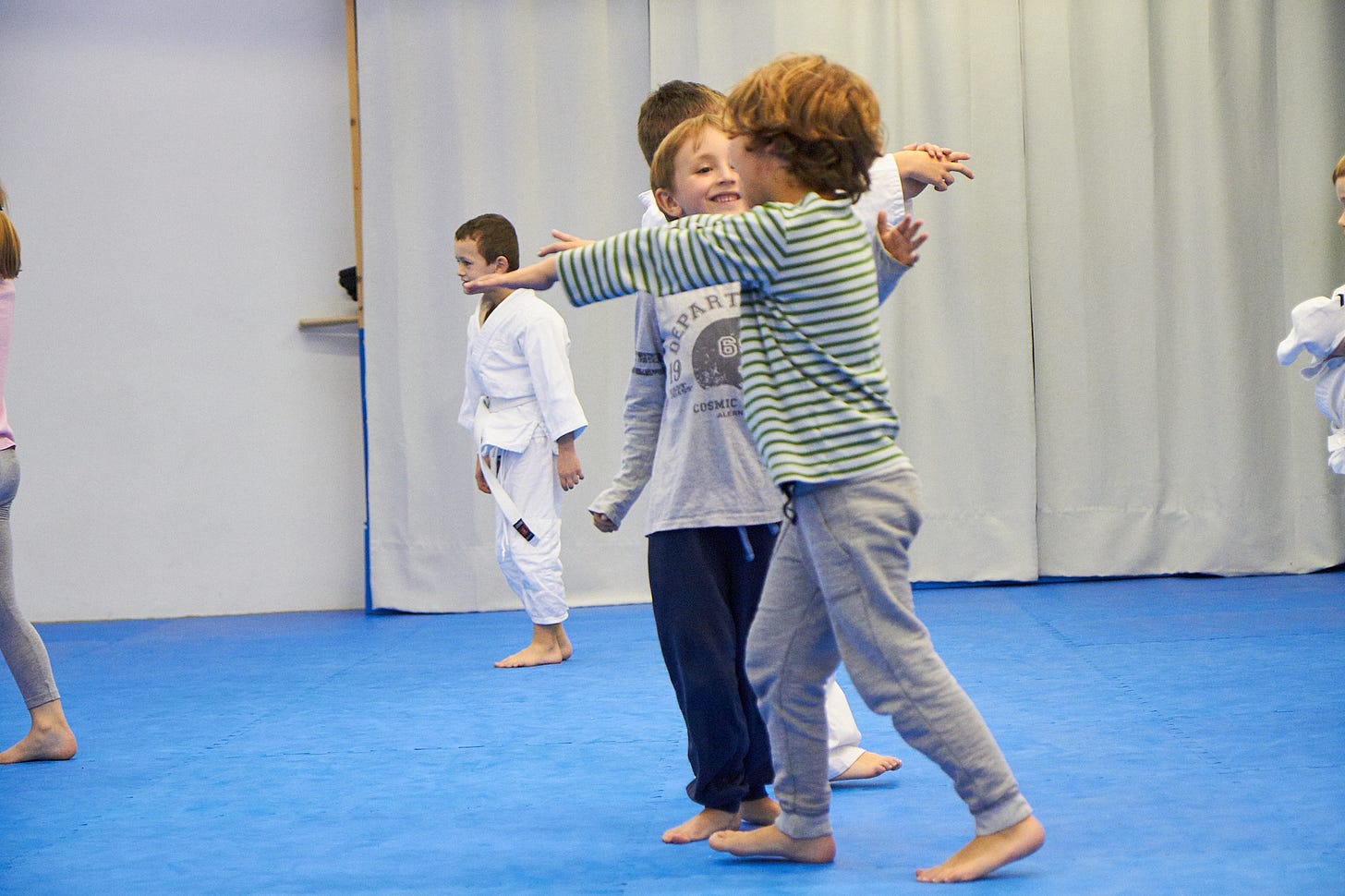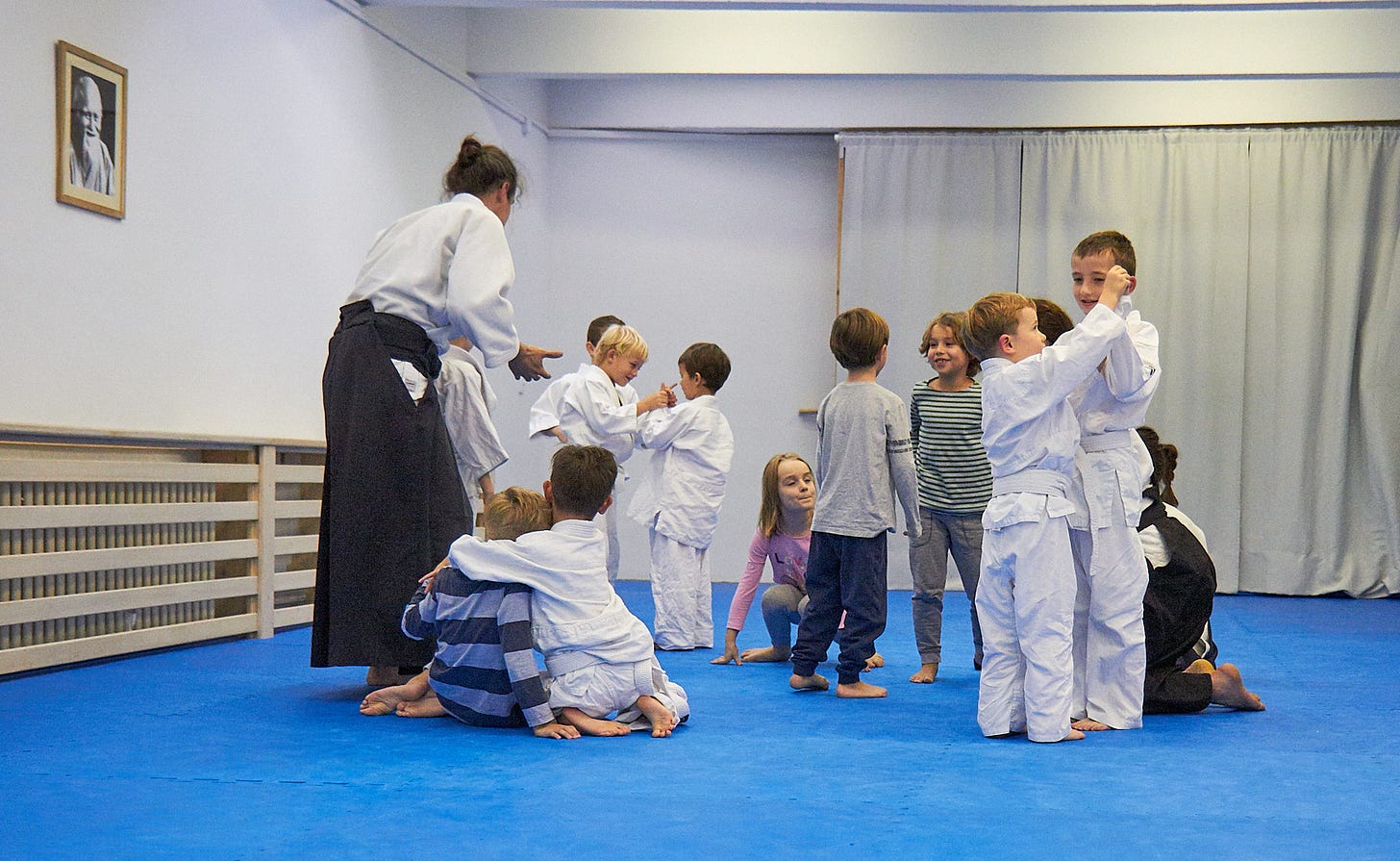If you teach children, you may occasionally meet this kind of parents: they believe they know better than the teacher.
Some years ago, there was this father whose 5-year-old daughter was coming to our 5-7 yo group for about a month. And she was skillful and cheerful and started to find friends there. It really worked for her. So I was surprised that after one class, the father came to me, looking a bit unsatisfied.
“Can you tell me what you do in the classes?” he began sharply.
“Sure,” I replied, “after a short warm-up, we do movement exercises, we play movement games, we teach children how to fall, practice techniques, wrestle, and fence with foam swords… we do a lot of things.”
“But you should focus on techniques. You should teach them techniques.”
“Well, we do, in every class.”
“But you should do it more. When I was in Judo as a kid, we were doing the techniques all the time.”
“We do techniques in every class. And as children grow older, we practice them more and more. With the little ones, we also take care of their overall development.”
“But my daughter told me that you play ‘dodge’ with them.”
“Yes, we play dodge at the end of every class this month, that’s true. Children like it and it’s also good for them.”
“But you should do Aikido techniques with them,” he kept insisting.
“We do, every class. Really. You can come and sit here to see the class, if you want,” I tried to get him on board.
“I cannot, because my daughter doesn’t want me to be there.”
Hm, interesting, I thought, why that could be?
But aloud I suggested: “Ok, so you can watch the class through the window from outside, if you prefer.”
“No, I don’t want to. You should just practice techniques with them. If I wanted my daughter to play dodge, I could send her to some other activity.”
“Well, you can, of course. But we play dodge, because it’s good for their body and brain development, because they need to aim and throw and dodge, it’s really good activity as movement preparation for martial arts. And children have fun.”
“Maybe, but you should practice more techniques, when I did Judo as a kid…”
No kidding, it went like this for some 15 minutes. I tried to be patient, to explain, to win him over. I just couldn’t let him decide about the content of our classes — he clearly didn’t know anything about our work and its logic.
So, after observing that the long discussion wasn’t going anywhere, I decided to give him one last chance.
“Look,” I said, “I understand that you have your idea of how our classes should look. But I think your daughter likes it here. And you know, as a parent, at some point you have to decide if you want to be happy yourself or you want your daughter to be happy.”
He understood — and chose to get offended. He turned away and I’ve never seen him again, nor his daughter. I was sorry for her. However, at that time, I was unable to solve it better.
We don’t want to make everybody happy
We do our work in our dojo; we know how and why we do it. We have been developing our way of teaching and organizing classes, step by step, for many years. We can see that it works for hundreds of students, both children and adults.
Parents whose children participate in our programs appreciate our work. Adult students are happy, whether they practice for three months or ten years.
But of course, what we do is not to make everybody happy. It cannot!
From time to time, someone is not satisfied. A father from the mentioned discussion. A mother of a shy boy, surprised that small children can be loud during free play. A young athletic karate lady, for whom the first beginner’s class was too boring, even though I told newcomers that the first two classes would be slow and then we would start adding complexity. A young man who expects us to meditate and be more spiritual.
Well, we could be more athletic or meditate more. But we cannot do both at once, can we? So we prefer finding our balance in opposites.
If those people at least tried, they might find that our dojo could work for them. Or not. But they didn’t try; they just asked us (more or less directly) to change our work to suit them and their ideas.
Which we don’t do.
Because we don’t want to make everybody happy1.
Yet we want to develop and grow
We do what we think is good to do. Which is fine and feels nice. And there’s a grave danger to it.
If we kept doing the same for many years, we would surely stagnate, close ourselves and we would distance ourselves from society.
And we want to develop, grow, experience new adventures, have fun with new people, stay inspired and up to date.

Thus, this is what we do:
We talk with the students of our dojo - both newcomers and seniors. We even have debriefs after beginner’s classes, not to mention discussions in changing rooms and pubs. We also travel abroad, talk with friends from other dojos. We have education for teachers. We get inspiration from other disciplines, observe what is happening in the broader society.
We have regular meetings of teachers, staff, and seniors. There, we share new insights, discuss them. Even the experiences with unsatisfied people, like I mentioned earlier. We put the gathered information into the context of what we already do.
Then we decide what we want to try, plan how to do it, and what it should bring.
And then we experiment. And if it works for us, we turn good practices into processes.
And so on and so on2.
We’re changing and adapting. And our change is conscious and comes from inside. It’s not an ad-hoc attempt to fulfill someone’s random desires.
Did you find the story inspiring?
How do you keep your boundaries while developing your game?
How do you stay yourself while allowing inspiration from outside?
Let us know, please!
You like our work? You can support us with a one-time contribution at Buy Me a Coffee https://buymeacoffee.com/aikido.art.for.life
Just imagine what we would become if we listened to all internet advisors that keep insisting that we should be more fighting, more harmonious, more Aiki, less Aiki, more strong, less strong, more like MMA, more like Zen, more traditional, less traditional, add competitions, stop comparing… Well, there are so many more or less informed opinions out there; everyone has one. Trying to please everybody is… to put it politely… impossible 🙂



